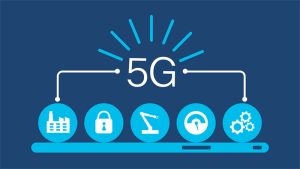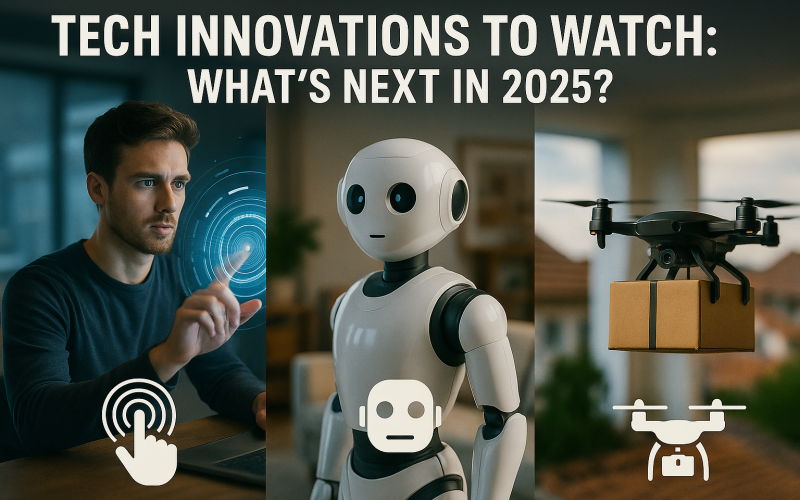Introduction
The pace of change in technology never slows. As we head into 2025, a handful of tech innovations 2025 promise to reshape how we live, work, and play. Next year we’ll see AI breakthroughs and new green energy tech that feel like science fiction come to life.
In this guide, we spotlight the major emerging technologies you’ll want to watch. We explain how advances in quantum computing can crunch data at dizzying speeds. We explore the latest in biotech that could extend healthy lifespans.
We dive into immersive augmented reality and virtual reality experiences, plus the evolving world of blockchain and Web3. We even look beyond Earth, where private firms race to open space to wider audiences.
Whether you are a tech enthusiast, a startup founder, or a curious everyday user, knowing these innovations helps you prepare for the future. We’ll break each topic into clear sections, offer practical tips, and give you a handy table to summarize the trends.
What is the future of artificial intelligence and machine learning?

Imagine AI woven into every part of our daily routines by 2025.
AI in healthcare
Companies now train AI models on vast medical datasets. These systems can find things doctors might miss, like early disease signs in X-rays or voice changes linked to Parkinson’s. By 2025, AI will recommend treatments, watch patients from afar, and make drug research faster by running virtual trials.
AI in business
Businesses leverage AI-driven analytics to forecast demand, optimize pricing, and personalize marketing. Chatbots handle customer queries around the clock, improving service without ballooning staff costs. In manufacturing, AI-guided robots work side by side with humans for safer, more efficient production lines.
Tip: If you run a small business, explore off-the-shelf AI tools for email marketing automation and customer insights. No heavy coding needed—just data connection and some tuning.
What breakthroughs are coming in quantum computing?

Quantum computing taps the strange world of subatomic particles to solve complex problems in seconds rather than years. While still in its early days, 2025 will see more robust quantum processors tackling real-world tasks.
Real-world applications
Quantum computers might soon improve traffic in big cities, create stronger materials, and break tough codes to help cybersecurity. Financial firms will use quantum models to better assess risk across global markets.
Overcoming challenges
Quantum devices must operate near absolute zero and avoid interference from heat or electromagnetic noise. By 2025, engineers aim to build more stable qubits and error-correcting algorithms. These advances will lower costs and allow wider access via cloud-based quantum services.
Tip: Watch for partnerships between cloud providers and quantum startups. They often offer free trial credits to explore simple quantum circuits online.
How will renewable energy tech transform power generation?

The world races to cut carbon emissions, and renewable energy tech is key. Solar panels, wind turbines, and energy storage systems are getting cheaper, more efficient, and more flexible.
Solar and wind innovations
Next-gen solar uses perovskite materials to capture more sunlight across different angles and wavelengths. Floating wind farms harness offshore breezes with minimal sea-bed impact. Both technologies promise to lower the per-kilowatt cost of clean power.
Energy storage and smart grids
Batteries based on solid-state chemistry will store more energy safely in smaller packages. Grid-scale storage facilities will balance fluctuations in solar and wind supply.
Tip: If you have a home, look for solar+storage packages. Early adopters often get rebates that cover much of the installation cost.
What new biotech advances are on the horizon?

Biotech in 2025 focuses on precision medicine and sustainable manufacturing. Gene-editing tools like CRISPR gain precision, while lab-grown meat and bio-based plastics reduce environmental impact.
Precision medicine
Doctors tailor treatments based on a patient’s unique genetic profile. Cancer therapies target specific mutations, and wearable sensors monitor vital signs to adjust drug dosages on the fly. These approaches boost success rates and cut side effects.
Biofactories and sustainable materials
Biotech firms engineer yeast and bacteria to produce fuels, fabrics, and chemicals without petroleum. These biotech advances offer greener, cruelty-free alternatives.
Tip: Follow biotech accelerators and conferences online to see when clinical studies or pilot products reach the market.
What’s new in augmented reality and virtual reality?

AR and VR blur the lines between digital and physical worlds. By 2025, these platforms become more lightweight, affordable, and integrated into everyday tasks.
Augmented reality in daily life
AR glasses project hands-free navigation directions and real-time language translations. Retail stores use AR apps so you can visualize furniture in your room before you buy. Maintenance crews wear AR headsets to see repair instructions overlaid on machines in real time.
Virtual reality for work and play
VR headsets reach new levels of comfort and graphics, making virtual meetings feel immersive. Training simulations for pilots, surgeons, and factory workers become standard workplace tools. On the entertainment side, VR games gain true multiplayer environments where physical movement maps seamlessly into the virtual world.
How will blockchain and decentralized tech evolve?

Blockchain goes beyond cryptocurrency in 2025, underpinning new Web3 applications from finance to art. Decentralized networks offer greater transparency and user control.
Finance and DeFi
Decentralized finance platforms let users lend, borrow, and trade without banks. Smart contracts automate payments and settlements, cutting fees and delays. As regulation matures, DeFi enters mainstream finance with insurance and asset management services.
Digital identity and supply chains
Blockchain-secured identities give people control over their personal data. Supply chains use distributed ledgers to trace food or medicines from source to shelf, boosting safety and trust.
Tip: Keep an eye on central bank digital currencies (CBDCs) in pilot programs. These government-backed tokens could shape how you spend and save in a digital future.
What role will space technology play in 2025?

Space is no longer just for governments. Private companies aim to build satellites, mine asteroids, and even send tourists on suborbital trips.
Satellite internet and Earth monitoring
Constellations of small satellites beam high-speed internet to remote areas. They also track weather patterns, deforestation, and ocean temperatures, feeding data into climate models and early warning systems.
Commercial space and lunar plans
Space firms develop reusable rockets to cut launch costs. Plans for lunar mining, habitats, and research and development labs move from sketches to blueprints. Space tourism edges closer to reality as companies finalize safety and training protocols.
Tip: Watch for stock listings of space startups and satellite service providers. They often signal when commercial-scale operations begin.
What is 5G Private Networking and How Will It Transform Industries?

5G private networks use the same 5G radio waves as public carriers but run on dedicated equipment and spectrum. That gives companies super‑fast, low‑latency connections that don’t share bandwidth with millions of consumer devices.
A factory with its own 5G network can link hundreds of sensors and robots to a central controller, all in real time. The result is smoother automation, less downtime, and safer operations. In logistics, warehouses use 5G private networking to track thousands of packages and guide autonomous forklifts.
By 2025, more businesses will deploy private 5G to power smart grids, digital twins, and AR maintenance. The cost of radios and spectrum leasing is falling, making private networks affordable for mid‑sized firms. Partners like Nokia, Ericsson, and local system integrators handle the setup.
Table: Top Tech Innovations to Watch in 2025
| Innovation Area | Key Development | Real-World Impact |
|---|---|---|
| Artificial Intelligence | Real-time AI diagnostics in healthcare | Faster, personalized patient care |
| Quantum Computing | Cloud-based quantum services | Breakthroughs in cryptography and logistics |
| Renewable Energy Tech | Perovskite solar panels | Lower-cost, higher-efficiency power |
| Biotech Advances | Lab-grown meat, precision gene editing | Sustainable food, targeted therapies |
| AR/VR | Lightweight AR glasses, social VR spaces | Enhanced work training and remote collaboration |
| Blockchain Technology | DeFi platforms, CBDC trials | Decentralized finance and tokenized assets |
| Space Technology | Reusable rockets, satellite internet | Cheaper access to space, global connectivity |
Conclusion
2025 promises to be a landmark year for tech innovations. Advances in artificial intelligence, quantum computing, and renewable energy tech will tackle long-standing challenges. Biotech advances and AR/VR will redefine health and entertainment.
Blockchain technology and space tech unlock new frontiers in finance and exploration. Staying informed about these emerging technologies lets you spot opportunities and prepare for change. Embrace the wave of innovation, experiment with new tools, and join the pioneers shaping tomorrow.











